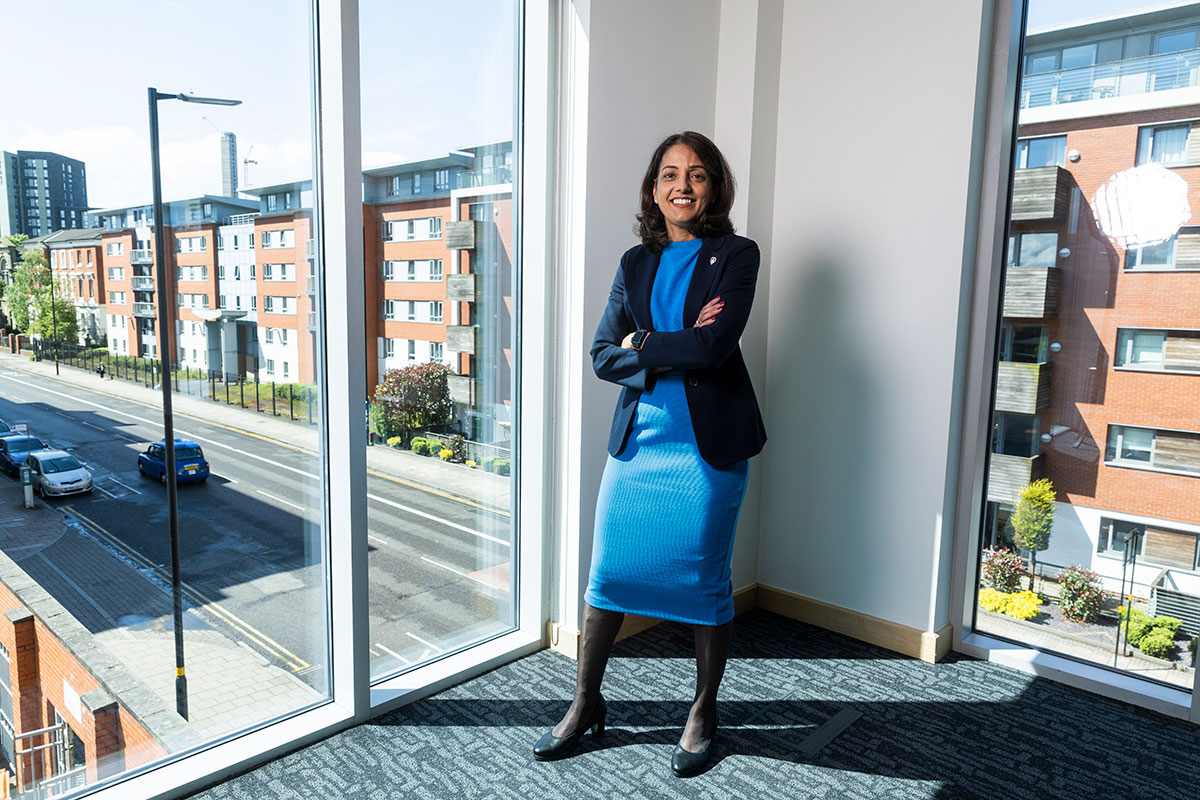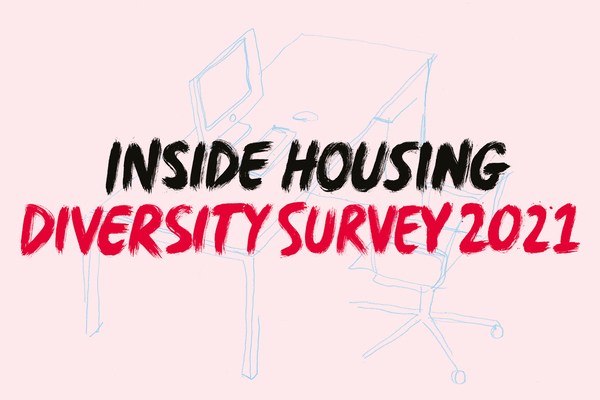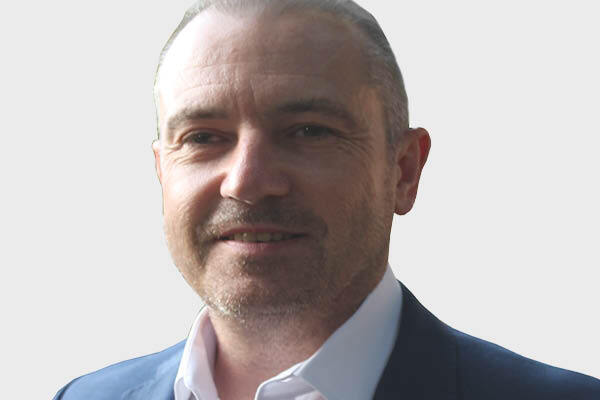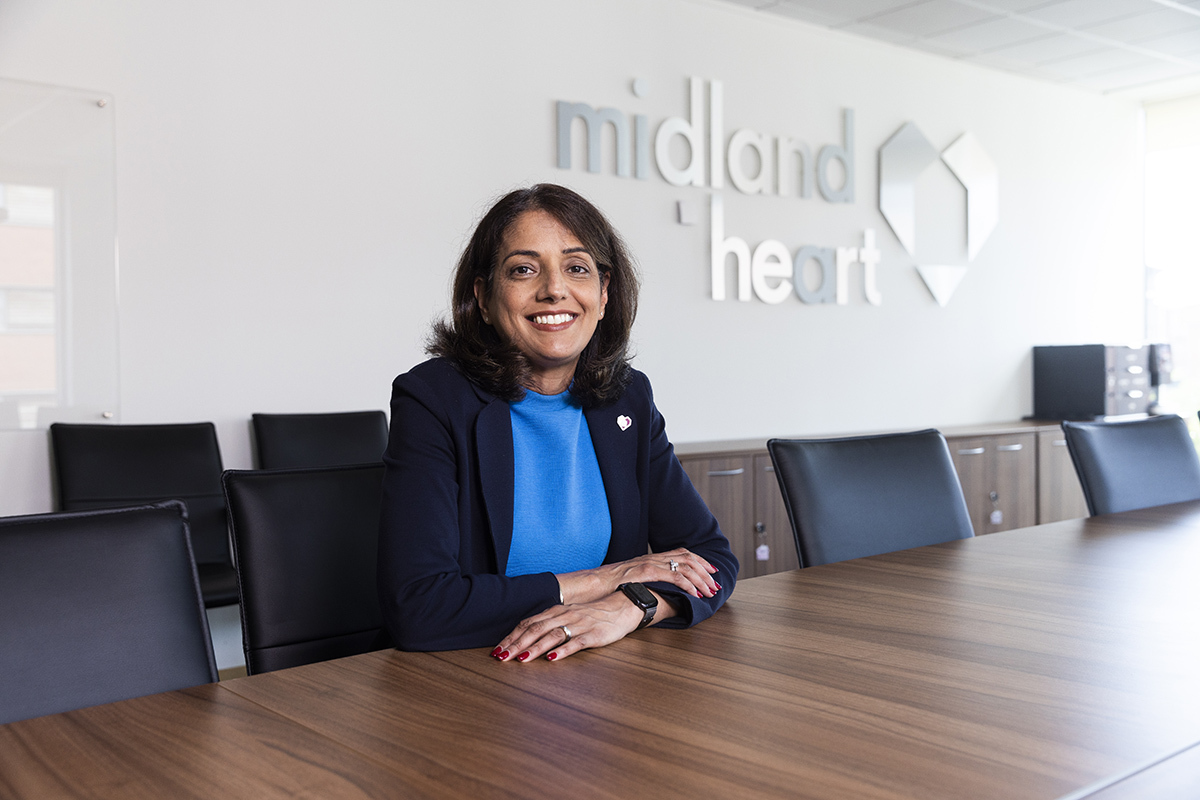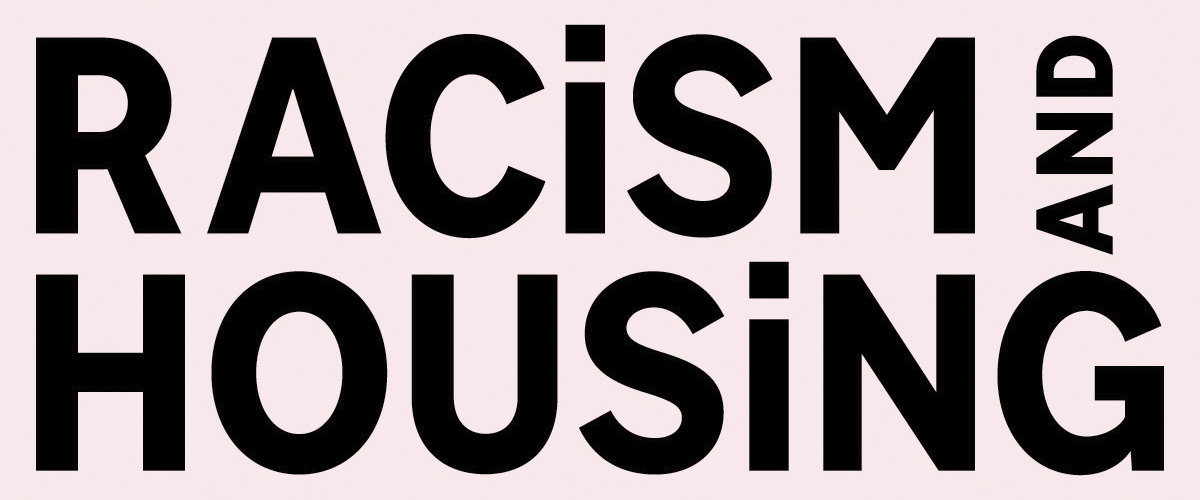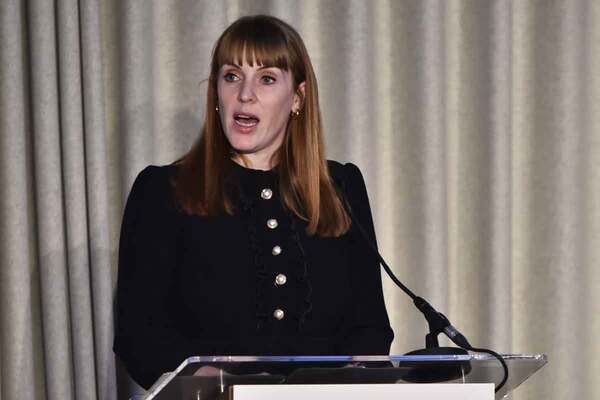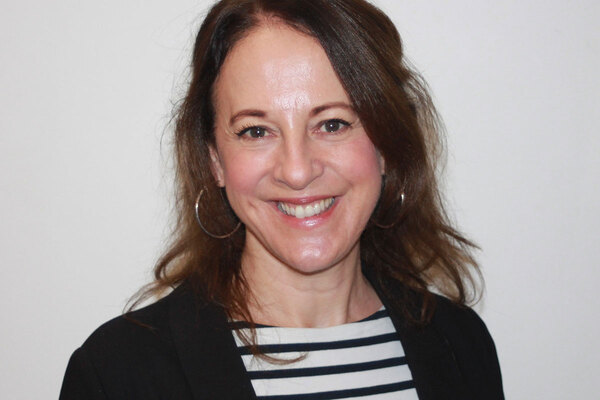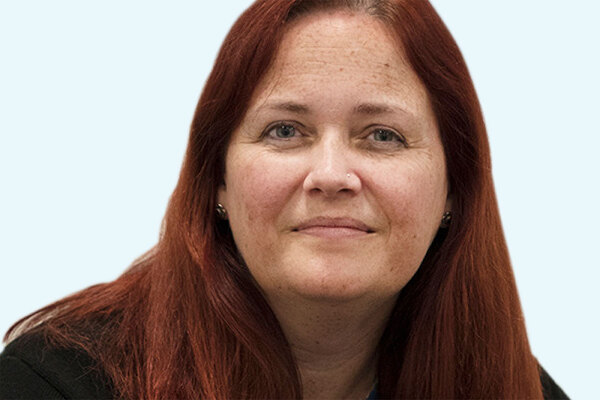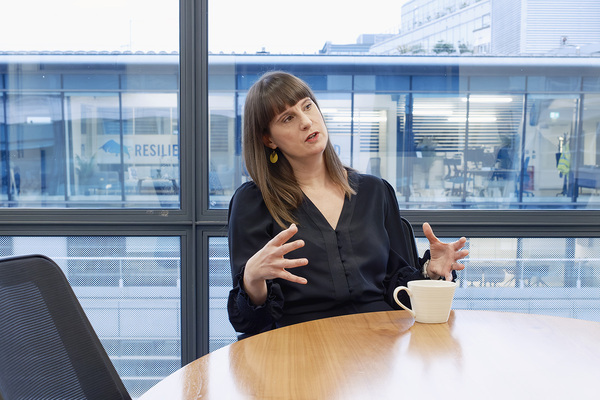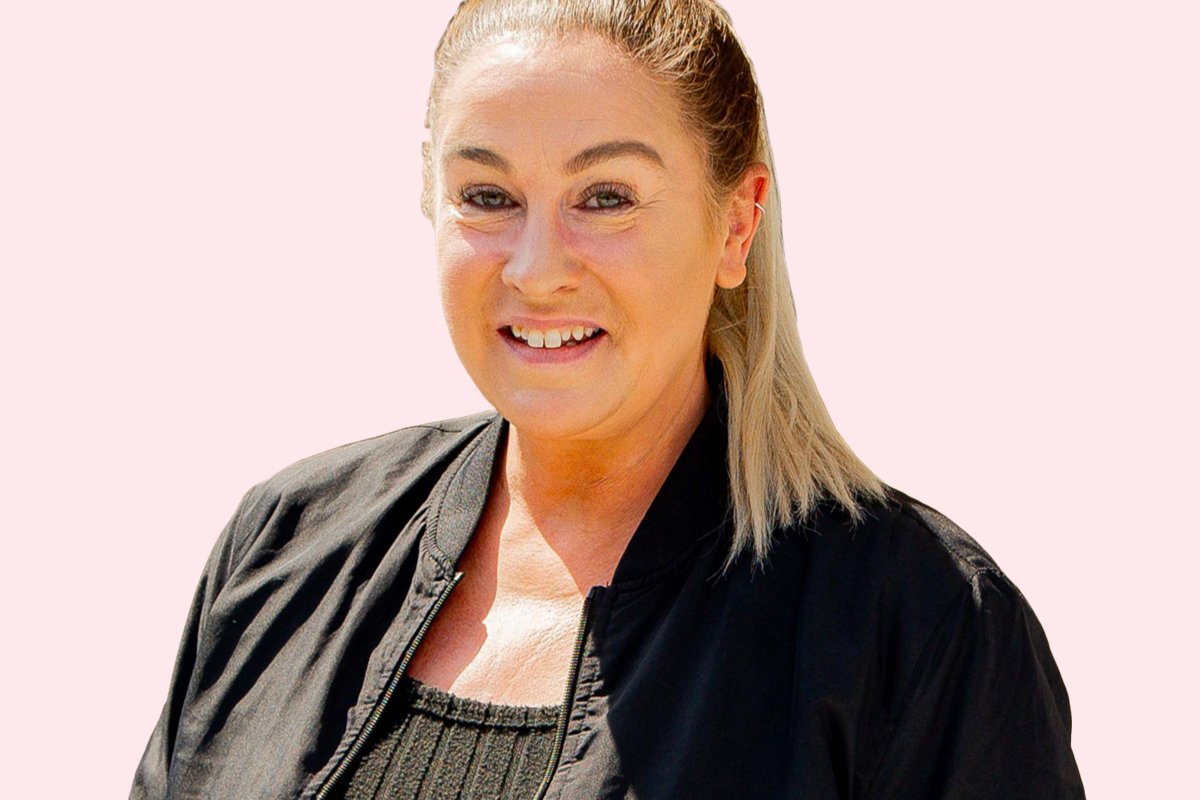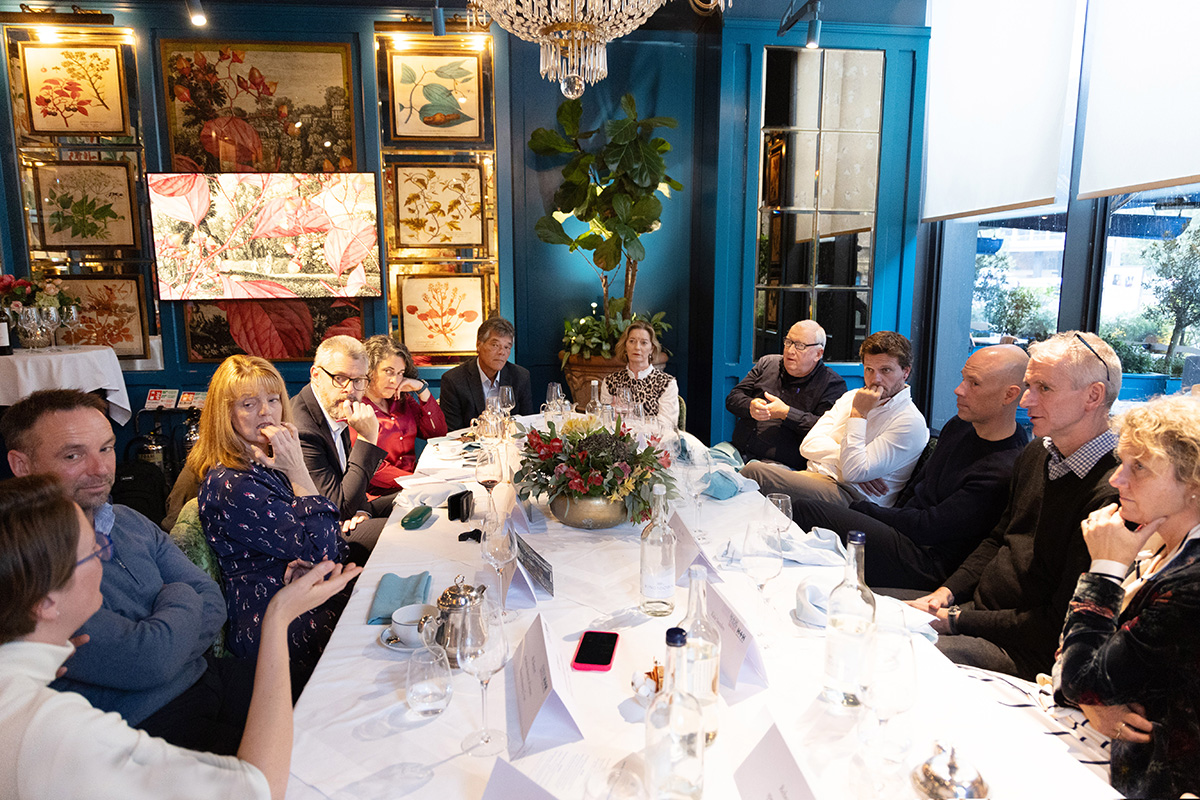You are viewing 1 of your 1 free articles
How to create an inclusive housing association: a conversation with Bal Kang

Baljinder Kang, executive director of corporate resources at Midland Heart, tells Eve Livingston about the equality and inclusion work she has spearheaded at the association. Photography by Fabio De Paola
In the same year that she got married and graduated from university, Baljinder Kang attended a job interview at an electrical distribution company. “At the end of that interview, I was asked by the HR director: ‘OK, you’re a young Indian girl who’s just got married, so when are you going to have your babies?’” she recalls. “That was back in 1994 and it’s always stuck with me.”
Almost 30 years later, Ms Kang – known to everyone as Bal, “unless I’m in trouble” – recalls this first taste of workplace prejudice as she speaks to Inside Housing in her current role as executive director of corporate resources at Midland Heart.
Now herself responsible for HR functions (as well as IT, health and safety, communications and facilities) at the housing association, Ms Kang has spearheaded equality and inclusion initiatives, including the publication of ethnicity pay data, increased maternity and adoption pay and dedicated development programmes for women and Black staff. We wanted to hear from the inside how a social landlord is trying to realign itself and put equality and inclusion ideas into practice.
“I suppose it’s made me able to empathise,” Ms Kang says of these early work experiences and those that followed after she had her two sons. “I remember that feeling of watching the clock ticking down in meetings, thinking, ‘I’ve only got 15 minutes to go and get the boys,’ and feeling an inordinate amount of pressure. What my own experience enables me to do is understand that position a bit better and improvise more readily.”
Beyond tokenism
Born to an immigrant family in Wolverhampton and raised on a council estate, Ms Kang began her working life in private sector HR teams, before roles at the NHS and disability charity Sense. From the latter, she joined Midland Heart in 2014, where she has steadily expanded her portfolio and now sits on the organisation’s executive team. Her move into social housing was made largely for practical reasons, as Ms Kang sought a job that was flexible enough to allow her to care for her young children and geographically close enough to their school.
“I have to be honest that before I joined here, I had very little knowledge of the social housing sector,” Ms Kang says. In fact, she says, many prospective employees from Black, Asian, minority ethnic and other under-represented backgrounds find themselves in the same position: “One of the things that’s always struck me is that this sector does not have a profile. Part of our [diversity] work has been about, as a local employer, positioning housing as a career choice.”
She continues: “At the end of the day, if you have an organisation that looks and feels like the communities that you’re working in, then ultimately the services that you provide to those customers will be better.
“People talk a lot about authenticity but what I see, if I’m honest with you, is a lot of tokenism and ‘what’s the flavour of the month?’,” she continues. “We try really hard not to do that. We don’t want to jump on a bandwagon; we use the data that’s available and we correlate it with the experience of our own colleagues.”
In the summer of 2020 – following the death of Black man George Floyd in Minnesota at the hands of a white police officer, and the Black Lives Matter protests that erupted as a result – organisations across the world rushed to express their solidarity and position themselves as anti-racist. It was an important moment for Midland Heart too, Ms Kang says, but one in which the organisation chose to look inwards instead of out.
“We said, OK, there’s all this stuff happening. We can’t control what happens out there. But talk to us as Black colleagues, talk to us about your experience of working here,” she recalls. “What are the challenges you face? And genuinely, what are some of the things that we can do something with?”
Black colleagues responded, saying they wanted to see better progression for Black and minority ethnic staff in the organisation and the analysis of data from a race perspective, as well as transparency about the experiences of Black and minority ethnic employees in the organisation.
“People talk a lot about authenticity but what I see, if I’m honest with you, is a lot of tokenism and ‘what’s the flavour of the month?’”
As a result, a Black Colleague Development Programme was launched and an ethnicity pay gap was published for the first time alongside gender pay gap reporting, showing a mean gap of 10.8% and a median gap of 8%.
“One of the things colleagues talked to us about in that summer of 2020 was the notion of microaggressions,” says Ms Kang. The organisation’s race network helped develop the content for an e-learning module on race, racism and stereotypes, which has since been completed by more than 700 colleagues. “And we’ll be developing future versions of that because it’s not a tick box – it’s not just ‘job done’.”
“You could argue that it’s easier because I’m on the exec board,” Ms Kang says of the reception her diversity work has received internally, “but we’ve not faced any resistance from colleagues, our board or our executive team. Everybody has been really supportive.”
This buy-in has been vital in launching initiatives such as race and disability networks, which are given budget and resources, as well as institutional backing from leadership.
Midland Heart’s executive team is made up of four people – the other three being apparently white men. “We are an executive team of four and in a small team I am pleased and proud that a range of protected characteristics (some more visible than others) and backgrounds are represented; as a result, enriching the diversity of our decision-making,” she says.
Ms Kang notes that on the 11-person board, which includes the executive team plus non-executive directors, she is one of two women and three people from an ethnic minority background. All, she says, are committed to discussing organisational diversity regularly. It is also a key consideration in recruitment of new board members; new recruits are primarily assessed against a skills matrix, but a focus on diversity, Ms Kang says, has led to increased diversity at board level in recent years.
“We said, OK, there’s all this stuff happening. We can’t control what happens out there. But talk to us as Black colleagues, talk to us about your experience of working here”
More broadly, she says, there are always learning opportunities. One came with the launch of a degree apprenticeship programme for young people from across the Midlands to train with Midland Heart and earn a funded degree at the same time. Six degree apprentices were recruited from 620 applications, “but we were challenged on the diversity of that cohort”, Ms Kang says. “We had a good mix of gender and a good mix of ethnicity, but we did not have any young Black people in that cohort. We could have done more to attract young people from other communities onto our programme and we will be doing that when we go out to recruit our second cohort.”
Pay gap reporting
The decision to voluntarily publish an ethnicity pay gap – which is not a statutory requirement – was well-received by colleagues at an internal Q&A session that accompanied publication, and actions to reduce the gap have been developed in partnership with the organisation’s race and ethnicity staff network. These include a Black colleague development programme for high-performing Black colleagues, and a series of ‘Let’s Talk’ events to ensure their voices are heard on an ongoing basis. Since the publication of the ethnicity pay gap, Black representation at leadership level has increased by 7%.
But while she is proud of having delivered on the commitment to publish the data, Ms Kang is quick to note that doing so does not negate the problems that do exist. “One of the things I started to think about was: why do we have a concentration of Black colleagues in our facilities management team? So one of the things we’re doing is conducting a focus group with that team to really hear from them about whether they are happy in those roles, or if there’s anything else we could be doing to help them move or progress.”
The top job: diversity in numbers
An Inside Housing investigation in 2021 found the following (out of 101 housing associations that provided data):
90%
Percentage of executive team members who were white
62
Number of associations with all-white executive teams
25
Number of associations with all-white boards
42%
Percentage of executive team members who were women
For others in the sector looking to focus on diversity and inclusion, Ms Kang emphasises the business benefits – that to remain competitive in a volatile labour market, organisations must create a welcoming environment. But she warns against assuming that everyone’s challenges are the same or that one organisation’s efforts can be replicated wholesale elsewhere.
“What’s worked for us is making sure we have the data,” she says. “Don’t assume you know what the challenges are; use your data, and talk to people about why it’s important they contribute to that data. Tell them what you’re going to do as a result of it, and you’ll be amazed how open people will be with you.”
“Our workforce hasn’t just presented us with a lot of issues,” she continues. “They’ve worked with us to say: OK, these are the issues but here are what some of the solutions could be.”
When Midland Heart was reconfiguring its workspaces, for example, it consulted with the staff disability network to ensure these were accessible for disabled and neurodiverse colleagues. As a result, the new plans included more one-to-one and quiet spaces away from group working.
Always more to do
When Inside Housing meets Ms Kang via Zoom, she is on-site in her office, where she has recently returned after working from home during the pandemic. Most Midland Heart staff still have the flexibility to choose where to work, but Ms Kang has recently taken responsibility for the health and safety and facilities teams.
“Those teams have to be on site every single day to keep everything running, so I think if we’re expecting them to be present, [they should see] leadership who are present and visible, too,” she says.
“I always stress to colleagues and our board that diversity is one of those things where we’ll never be able to sit back and tick it off as a job done”
She has also taken responsibility for IT, “a huge learning curve for someone from HR”, she says with a laugh, but one she finds fulfilling as well as challenging. The most rewarding part of her role, though, “is when you see people coming through and succeeding – being able to see our actions come to fruition”, she says. “So all of those cornerstones and that foundation that we’ve put in place to enable people to develop and grow, actually being able to see that that’s happening is fantastic.”
Ms Kang is clear, though, that diversity and inclusion are ongoing exercises and that inequality still exists in organisations and society – and even in the lives of senior leaders like herself.
When she was promoted to Midland Heart’s executive team, she delayed telling her Indian Sikh mother for fear of her response. When she did share the news, her mother congratulated her but asked if she would still be able to cook her husband’s meals.
“I always stress to colleagues and our board that diversity is one of those things where we’ll never be able to sit back and tick it off as a job done,” Ms Kang reflects. “It will never be something we can say is done and delivered; there will always be more that we can do.”
Racism and Housing series
Inside Housing’s Racism and Housing series aims to investigate how race inequality and racism interact with and impact on housing – for tenants, for staff working in housing, and for organisations. It has been launched a year since George Floyd’s murder prompted a huge global wave of Black Lives Matter activism.
We will be publishing monthly investigations that look at racism, race and housing, both in terms of what is going wrong, and what actions that sector is taking to address this.
If you have an idea for a story relating to this campaign, please contact deputy editor (features) Jess McCabe, at jess.mccabe@insidehousing.co.uk.
The stories published so far include:
‘We had to abandon everything’: the story of Chan Kataria and the flight of the Ugandan Asians
Race and the cost of living crisis: the impact on social housing tenants
How to create an inclusive housing association: a conversation with Bal Kang
How Cardiff landlords are tackling under-representation
Why has diversity progress stalled?
How racism impacts homeless people
How planning is failing to address race inequality in housing
Race and allocation: who are the new tenants getting social housing, and is it equitable?
How to increase representation of ethnic minorities in senior roles
How race impacts on people’s likelihood of living in a damp home or experiencing fuel poverty
Sign up for our daily newsletter
Already have an account? Click here to manage your newsletters
